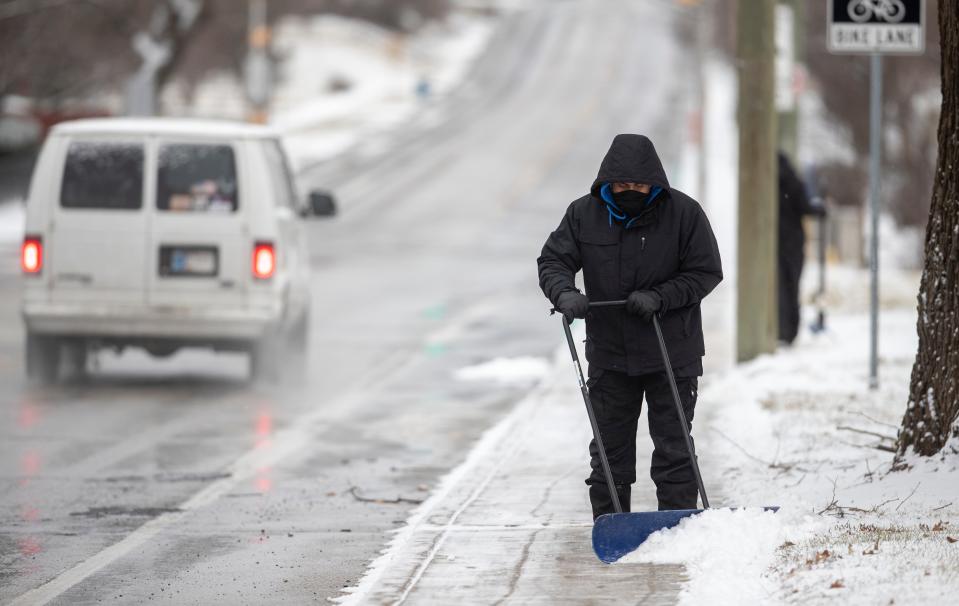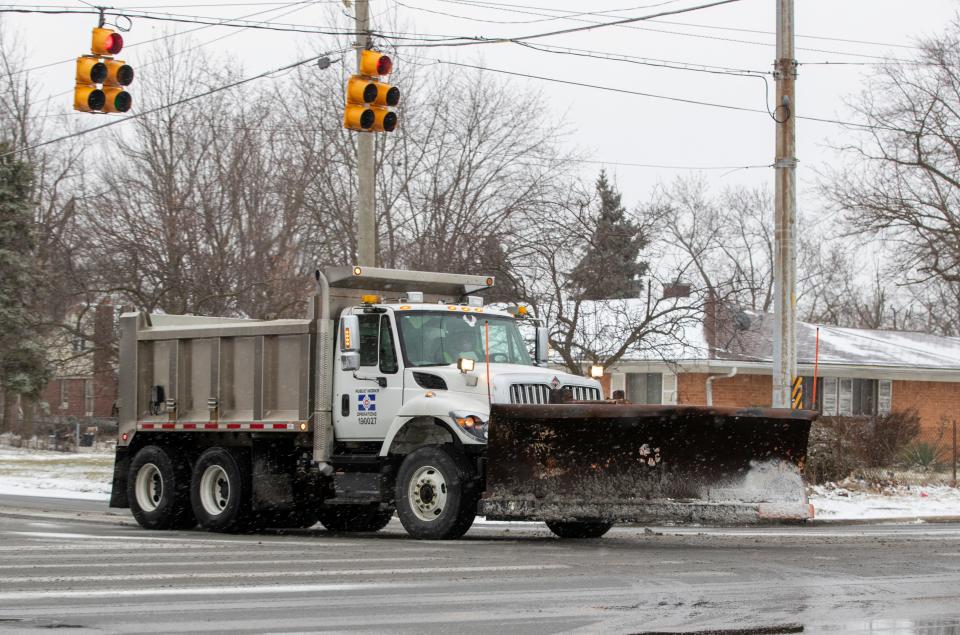Scrub Hub: Is Indiana in the middle of a snow drought? (Yes, I know it just snowed)
First things first, I know it snowed this weekend. But for anyone who has grown up in the Midwest or lived in Indiana for several years, would you really say that counted?
If you look around, there may be a tiny bit left over around the edge of driveways or the corner of rooflines. But in reality, most of it is already gone — it melted within just a few hours. Did you get out your snow blower, or even a shovel?
What you actually may have needed more so far this winter season is an umbrella. Over the last two months, Indiana has seen more than 5 inches of rain across its central region.

Even though the temperature has grown colder in the last few weeks, it definitely hasn’t felt like a normal Indiana winter.
So it would make sense for this edition of the Scrub Hub, that we are answering the questions: Is central Indiana in a snow drought? And what does climate change have to do with it?
To learn more about this winter weather we've been having and if it is, in fact, unusual, keep reading.
Short answer: Some of least snow in century
Data shows that we are, in fact, in a snow drought. A snow drought is defined as a period of abnormally little snowpack for the time of the year, according to the U.S. government.
Despite a light coating of snow over the weekend, our lack of snow is in historic territory here in Indy.
According to the National Oceanic and Atmospheric Administration, a federal agency, we've had 0.6 inches of snow in the Indianapolis area from Dec. 1 through Jan. 24. Half of that came just this past weekend. That total — six-tenths of an inch — compares to more than 12 inches of snow that is normal for the period of December and January, according to NOAA.
The roughly half inch of snow the region has received to date also is the third least amount of snowfall over the same period of time in the last century.
There have been only two other times when there was less snow in these two months. December of 1941 to January 1942 saw 0.1 inches, while that of 1931 to 1932 saw 0.2 inches. There also have been only a handful of times in the last 100 years that there were less than 2 inches of snow across December and January.
Long answer: Climate calls for wetter winters
This snow drought goes against what the Old Farmer’s Almanac predicted for the 2021 winter: Below average temperatures and lots of snow to parts of the country, including Indiana.
While that may still come between now and March, so far, things are shaping up to be a winter of lighter snow. But not necessarily dry.
As I mentioned, Indianapolis saw more than 4 inches of rain in December, which is almost double what is normally expected for that month, according to NOAA data.
That follows along with what research out of Purdue University says is likely for Indiana’s future as a result of climate change and the world’s warming.
The Scrub Hub: Your questions. Our answers.
Do you have questions about the environment? IndyStar environmental reporters Sarah Bowman and London Gibson want to hear from you.
It’s hard to link or attribute the short-term phenomenon of this year’s snow drought directly to climate change, said Jeff Dukes, director of the Purdue Climate Change Research Center. The academic said he noticed he hasn’t had to shovel his driveway recently.
That said, “the model projections suggest that we will get less snow as the warming trend continues,” Dukes added.
The climate is warming: Purdue’s research shows Indiana has already warmed more than 1 degree Fahrenheit in the last century and temperatures are expected to rise another 5 to 6 degrees by the 2050s.
Climate crisis: Indiana students demand action on climate change. Lawmakers respond with hard 'no.'
Indiana’s springs and winters are predicted to get much wetter. But as the climate warms, rain will take the place of much of the snow in the cold season that typically runs from November through March.
That’s not just true for the central region of the state. In southern Indiana, there will be little snowfall at all by late-century. And throughout the state, snow events of greater than 2 inches will happen half as often by the end of the 21st century, according to Purdue’s research and projections.
Similar to seeing less snow, Indiana is also seeing fewer days with frost. The annual number of frost-free days has increased by nine since 1895, the research shows, and that trend will continue — increasing days without frost by nearly a month as early as the 2050s.

Fewer days with frost does provide a longer growing season for farmers, but it could increase the growth of invasive species and less desirable plants such as ragweed. Fewer days with significant snow could also provide some benefits. It could save municipalities and the state money needed to plow and salt roadways and save residents time and resources for their own personal snow removal.
A wetter spring and particularly wetter winters also pose their own problems. Increased rain in the winter when most fields are plowed and don’t have anything planted could wash away fertilizer and topsoil from farms. That could degrade water quality downstream and also reduce crop yields in upcoming years.
And that’s just one example of what winters with snow can mean for Indiana’s future. While we can’t say that this snow drought is part of a larger trend, it is a historical winter for Indiana, so far.
If you have more questions about Indiana's unique weather patters, or any other topics, let us know! You can ask us by submitting a question through our Google form below.
Can’t see the form? Click here.
Call IndyStar reporter Sarah Bowman at 317-444-6129 or email at sarah.bowman@indystar.com. Follow her on Twitter and Facebook: @IndyStarSarah. Connect with IndyStar’s environmental reporters: Join The Scrub on Facebook.
IndyStar's environmental reporting project is made possible through the generous support of the nonprofit Nina Mason Pulliam Charitable Trust.
This article originally appeared on Indianapolis Star: Indianapolis snow drought is happening; what it means

